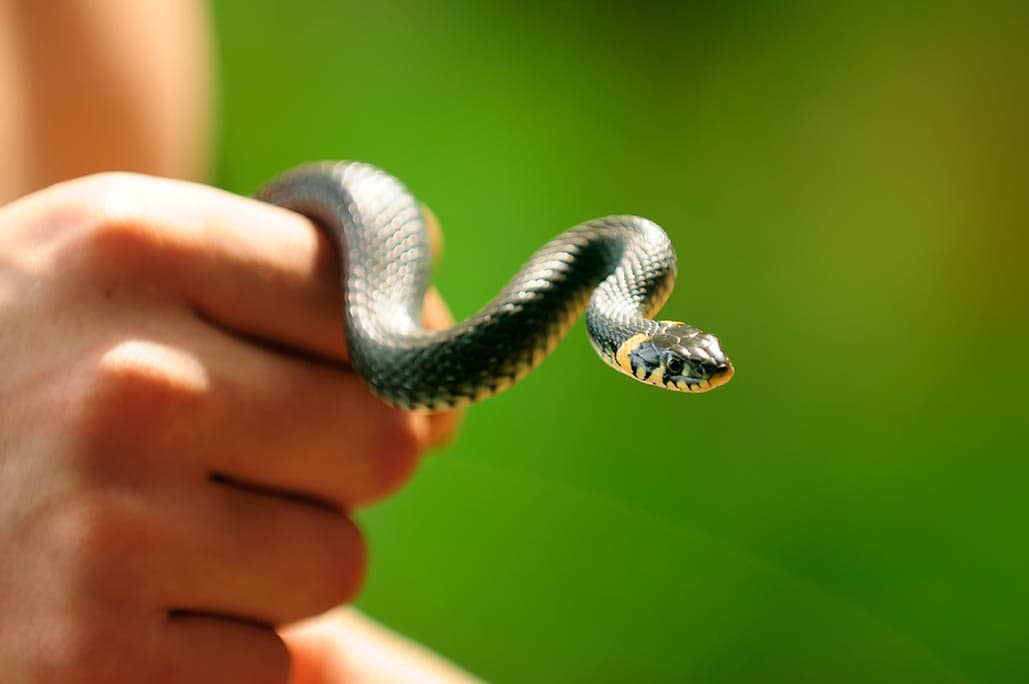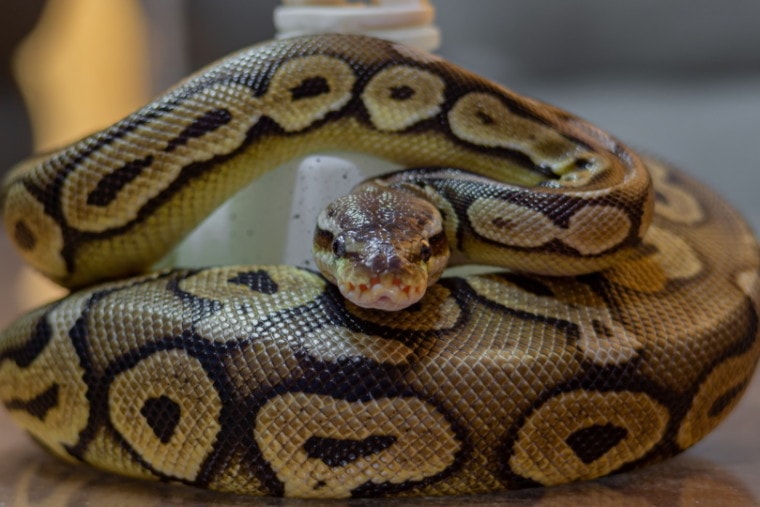
One of the most popular reasons people like to own snakes is their variety of colors. The Pewter Ball Python is a perfect example. This is classified as a morph, meaning a snake that is bred for a certain color variation. The Pewter Ball Python is simply one of over 4,000 different morphs. This snake is relatively easy to take care of and can be good for first-time owners. Let’s take a look at him!
Quick Facts about the Pewter Ball Python
| Species Name: | Python regius |
| Common Name: | Pewter Ball Python |
| Care Level: | Easy |
| Lifespan: | 20 – 30 years |
| Adult Size: | 3 – 5 feet |
| Diet: | Meat and Insects |
| Minimum Tank Size: | 60 gallons |
| Temperature & Humidity | 75 – 95 degrees Fahrenheit |
Do Pewter Ball Pythons Make Good Pets?
Pewter Ball Pythons can make great pets. Just don’t expect him to cuddle or do tricks. But if you are the kind of person that likes to have a pet as a conversation piece, then this might be a great option, as long as you are adventurous enough. They are pretty easy to handle, but you can’t be hesitant. Setting up the tank is fairly simple and maintenance is low-commitment.

Appearance
The base color of this Ball Python is tan or brown. It has a pewter to gray-colored stripe running along its backside. It is also characterized by white lips and faded green eyes. The females tend to be larger, sometimes up to 5 feet. But in general, they are anywhere between 3 and 5 feet long.
How to Take Care of Pewter Ball Python
Habitat, Tank Conditions & Setup
There is debate surrounding what kind of enclosure is best for ball pythons. There are two prevailing choices. The first is the glass terrarium. The second is a plastic tub. Both have advantages. One of the main advantages of a glass tank is that you can heat from below or above without having to worry about plastic melting. However, the major drawback is that the glass tanks, with the standard screen lid, on their own do not retain enough humidity. The Pewter Ball Python requires a decent amount of humidity, so this can be challenging.
Tank
We recommend a plastic tote and lid for the tank. The tank should be large enough so that your Pewter Ball Python can fully extend itself along two sides of the tank. Since the females top out at about 5 feet in length (they are typically larger), a 3’ x 2’ tote with at least six inches of depth should suffice. Don’t go too big, especially if they are hatchlings, because they can feel vulnerable. Be sure to get a lid that securely closes with some kind of handle. A lid that snaps shut with pressure alone can be forced off or escaped through by a ball python.
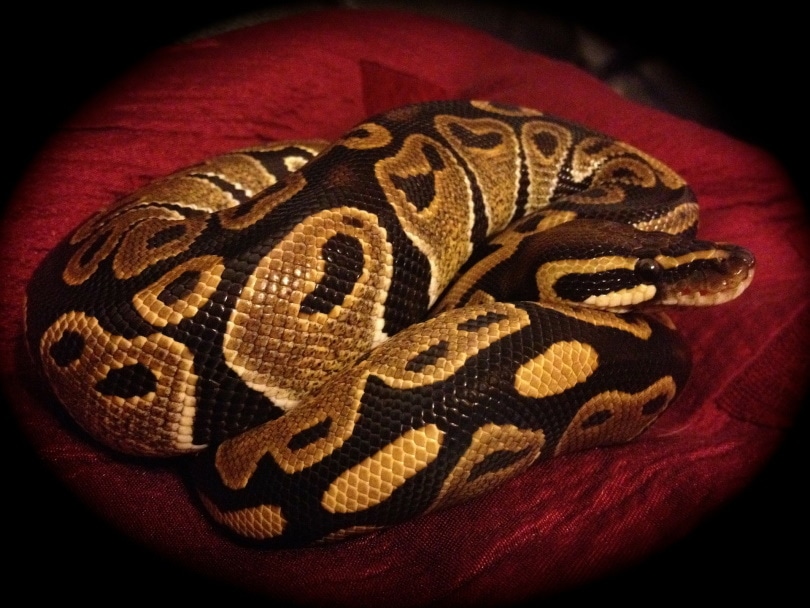
Lighting
Pewter Ball Pythons do not require more lighting other than what might naturally occur in the room in which they are. The only soft requirement is that there be light in the room during the day and that it be dark at night, in order to simulate a daily cycle.
Heating (Temperature & Humidity)
Using a heat mat below the tank is preferred to a heat lamp since ball pythons don’t need to bask. Your heat mat should take up about 30% of the surface area of the bottom of your bin. A little bigger is okay, but do not exceed 40%. Place the heat mat on one end to create a warm zone. The other end will be the cooler zone. To regulate the heat of the mat, use a thermostat that you can plug the heat mat into To adjust the humidity in the tank, you can drill ¼’’ holes in the side of the plastic. If you drill too many holes and it isn’t humid enough in the tank, you can always tape them up.
Substrate
Shredded aspen fiber works best for a substrate because of its cost and it doesn’t retain too much moisture. While the Pewter Ball Python does like to spend a lot of time in humidity, it does need a dryer surface to lay on. The humidity should be in the air, not in its bedding. If it gets too wet, they can develop issues with their skin as well. The aspen substrate, since it is dry, is also very absorbent. This makes clean-up easier since you only have to spot clean.
| Tank Recommendations | |
| Tank Type | 60 gallon glass vivarium/plastic tote |
| Lighting | N/A |
| Heating | Heating pad, gradient |
| Best Substrate | Aspen bedding |
Feeding Your Pewter Ball Python
Smaller Ball Python hatchlings can eat large insects such as crickets. But as they start to develop more, they should wean off the crickets and be eating thawed pinkies. An adult Pewter Ball Python should be eating medium sized mice and rats almost exclusively.
| Diet Summary | |
| Fruits | 0% of diet |
| Insects | 0% of diet |
| Meat | 100% of diet – small/medium sized rodents |
| Supplements Required | N/A |
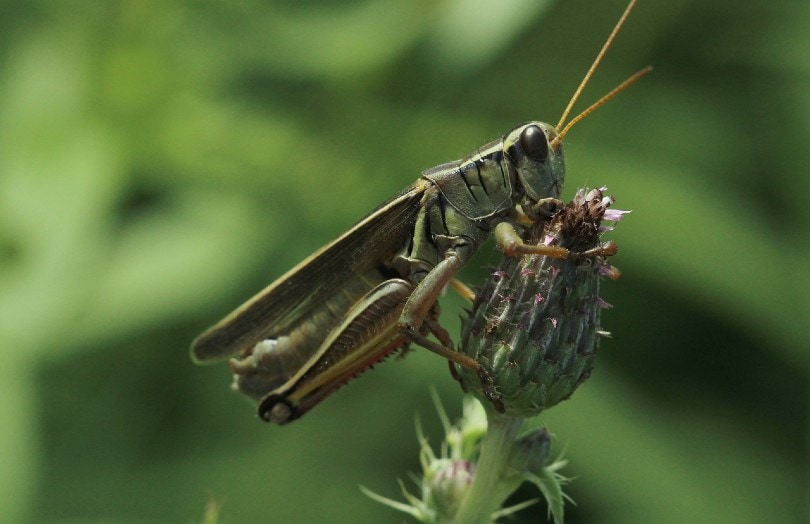
Keeping Your Pewter Ball Python Healthy
If you are unsure about the health of your snake, always consult a reptile veterinarian. Signs of good health include regular eating/appetite, activity, alertness, clean skin, and shedding in one piece.
Ticks and Mites
Mites especially can thrive in more humid environments. This is one reason to ensure frequent sanitation of your snake’s tank. You will notice mites as black spots scattered across the skin of your snake.
Respiratory Issues
Ball Pythons can develop respiratory issues from either the tank being too arid or too humid.
Dermatitis
Your Pewter Ball Python can develop blisters and also shed too quickly or in pieces. Usually due to lack of sanitation and improper temperature/humidity conditions.
Lifespan
In captivity, Pewter Ball Pythons tend to live about 20 to 30 years. In the wild, they often only live about 10 years since they are more susceptible to other threats, predators, etc. 20 to 30 years is a long time for a snake. Some Ball Pythons are recorded to have lived past 40 years!
Breeding
The Pewter Ball Python is a morph, meaning that it is bred to have specific colors. When crossing a pastel and cinnamon ball python, what results is the Pewter Ball Python. You will notice that the hatchlings have a bit lighter colors. They tend to get darker with age.
The breeding season is roughly from September through November. A clutch of eggs is from 1 – 11 eggs that tend to stick together. The hatchlings are about 10 inches long on average.
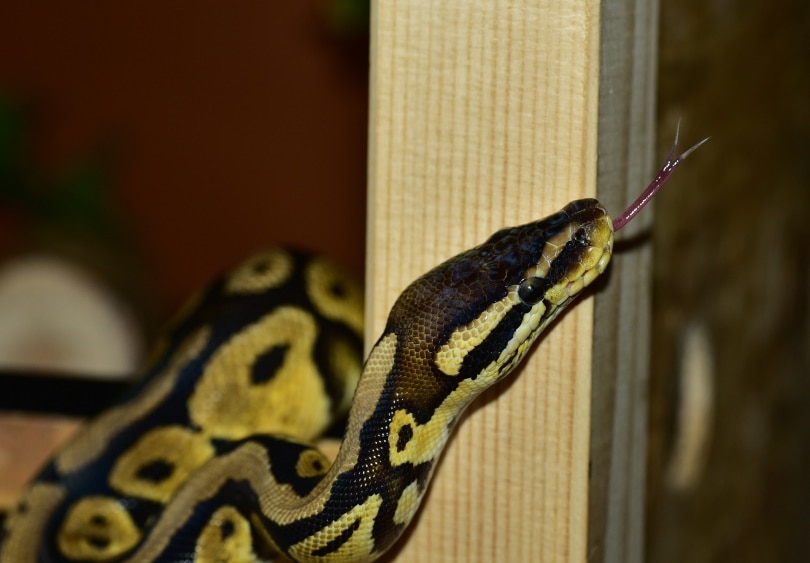
Are Pewter Ball Pythons Friendly? Our Handling Advice
In order to not alarm your snake, grab gently but confidently toward the center of your snake and pick him up. Hold him in the air with one hand and he will want to coil around your hand/forearm. They are friendly, just be sure to not alarm them with any sudden movements.
Shedding: What to Expect
Like many other snakes, the Pewter Ball Python will shed its skin. It does this about once every 5 weeks. Its eyes will turn blue and cloudy before it starts to shed. It should shed in one piece. If you notice that your snake is having a hard time shedding in one piece, it may be indicative of another health issue such as dermatitis.
How Much Do Pewter Ball Pythons Cost?
For one hatchling or adult, you are likely to pay at least $150. Since this is a specific morph of the standard Ball Python, it is harder to acquire.
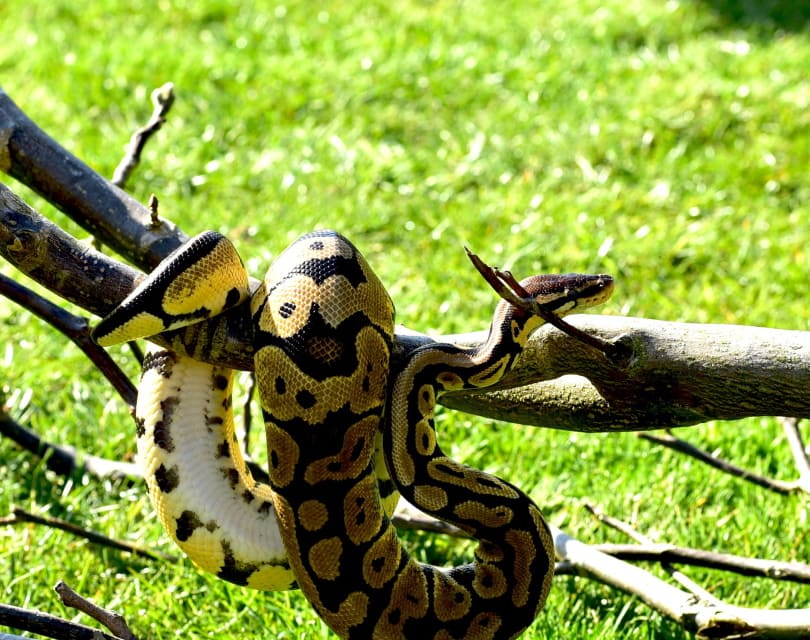
Care Guide Summary

Final Thoughts
Probably the most difficult thing about taking care of a Pewter Ball Python is ensuring that its habitat meets the proper temperature and humidity conditions. Attending to this can save your snake some health issues in the long run. If you have him in a tub, don’t forget about him! It might be easy to let his needs slip your mind, especially if he doesn’t have a light on. Be sure to take him out from time to time to enjoy him.
Featured Image Credit: TKBackyard, Shutterstock


